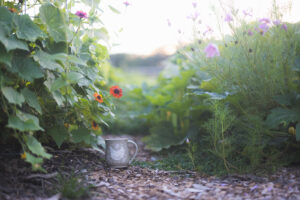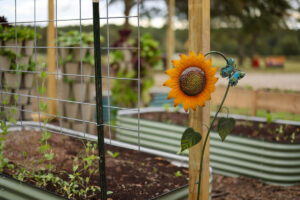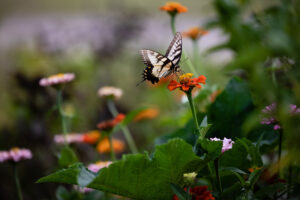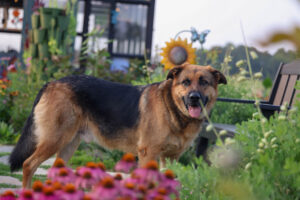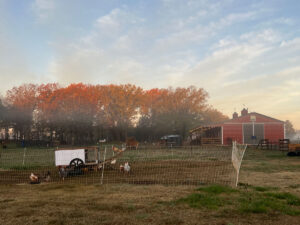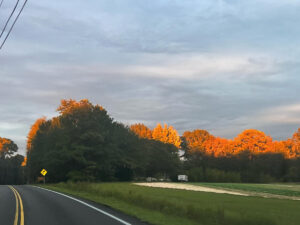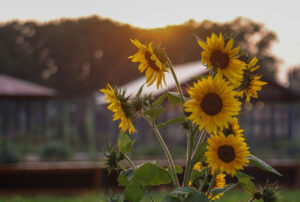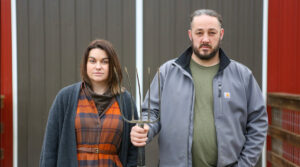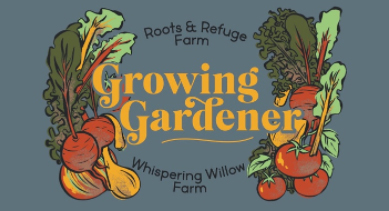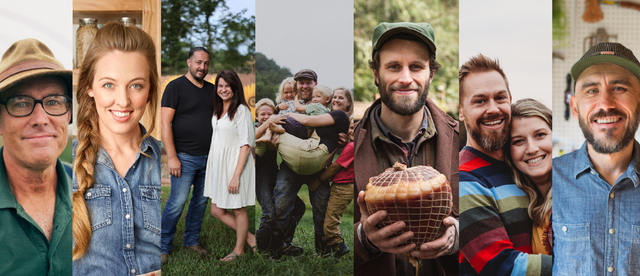Learn how to plan a fall vegetable garden by knowing what to plant in July and what to plant in August. You don’t need to live in a warmer zone like Texas or California for success! Those northern growing zones can have a great fall harvest with adequate planning and understanding of growing times.
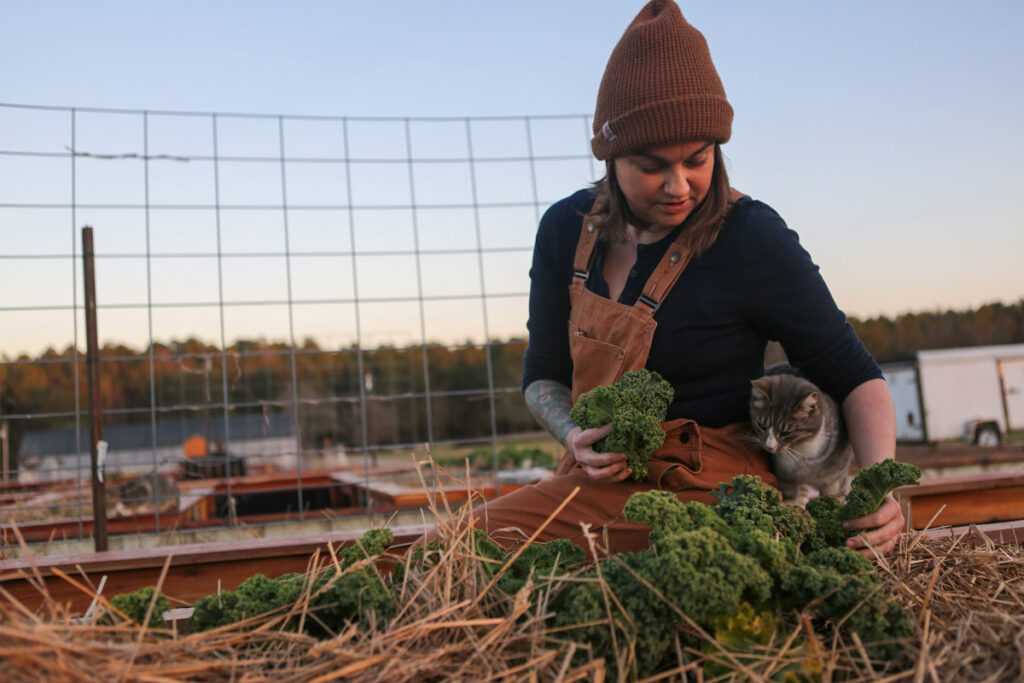
Spring gardening seems easier because every store is full of plants and all the gardening tools.
However, in July and August, when all the stores are full of school supplies, and nobody is encouraging you to garden, I am here to tell you that this is the best time to garden, and you absolutely should do it.
I've talked about fall gardening many times, so I'm including all those videos and my podcast on the topic in this post (keep scrolling to watch/listen to them all)!
Knowing what to plant in July and what to plant in August for a good vegetable harvest in the fall is easy and fun. Fall garden crops are nutritious, delicious and incredibly easy to grow.
Why You Should Plant in July (or August)
Fall is a wonderful time to garden because often, the garden pests are less persistent, making the time in the garden more enjoyable.
Cooler weather will make working in your garden much more pleasant. Being in the garden in the fall is such a balm to your spirit. It’s such a great time for people who struggle with the heat.
Also, the more moderate temperatures of fall, paired with more rainfall, mean less watering maintenance.
Lastly, fall is the time to enjoy the beautiful colors of bright yellow pumpkins in your garden beds, and the sweetness that a frost will bring to your carrots.
What Do These Gardening Terms Mean
Gardening terms can be confusing to a new gardener. Here are a few terms to make it easier for you.
Direct Sowing
Direct sowing means planting your seeds directly in the ground. It’s easiest to do when temperatures are above freezing and the soil has reliable precipitation.
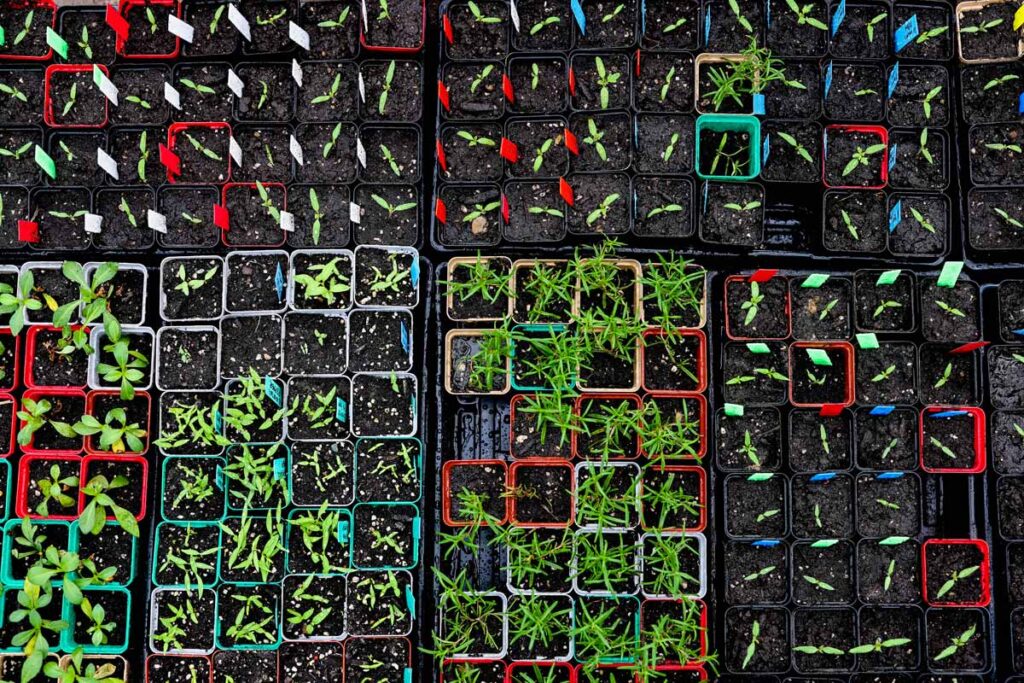
Indirect Sowing
Indirect sowing means to sow seeds into a flat or other indoor seedling trays rather than directly into the ground. This helps the seeds to germinate in a controlled environment until they are strong enough to be transplanted outdoors.
Many people use this method in the early spring before it's warm enough to plant crops into the garden, but it's also handy in the summer months when the heat is oppressive and your seeds may struggle.
Cold Hardy
Cold hardy plants are those that are most capable of handling the cold and can withstand freezing temperatures.
These cold hardy vegetables include arugula, asparagus, beets, broccoli, Brussels sprouts, cabbage, carrots, collards, endive, garlic, kale, kohlrabi, leeks, lettuce, mustard greens, onions, parsnips, potatoes, rhubarb, rutabaga, spinach, and turnips.
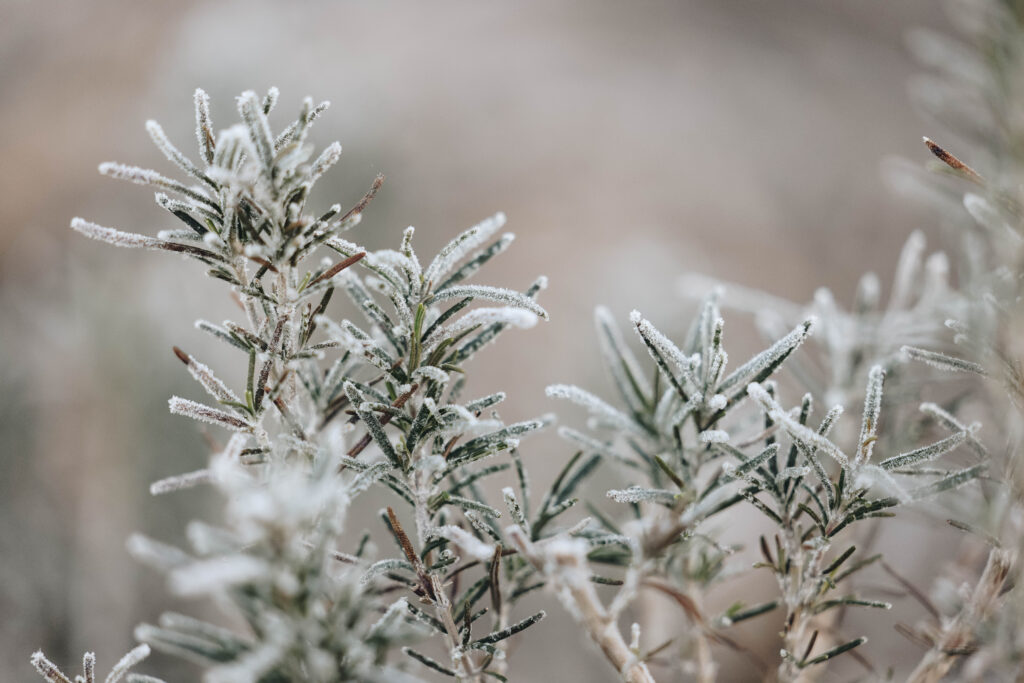
Frost Tolerant
Frost tolerant means that a plant can survive a frost or temperatures below freezing. A light freeze is when temperatures are between 28°F-32°F, and a hard freeze is below 28°F.
Succession Sowing
Succession sowing is the practice of sowing your crops in intervals of 7 to 21 days to have a consistent supply of fresh produce throughout the growing season.
Bolting
Bolting usually happens when it’s very warm out. Your crops put on a vertical growth spurt to flower and produce seeds before they are ready for harvest. Bolting also causes the leaves to become bitter in crops like lettuce and sweet basil.
How do I Plan For My Fall Harvest?
Know Your First Frost Date
There are two easy ways you can find your first frost date. You can ask Google, “What is the first frost date in (your town and state)”, or you can also look at the Farmers Almanac This will give you the first estimated date that your area will have temperatures below 32°F.
Know How Many Days You Have Until the First Frost Date
Once you’ve found your first frost date, you must find how many growing days you have left. Pro-Tip: You can count it out on your calendar, of course, but it’s easier just to ask Google. My first estimated frost date is October 27, so I will ask Google, “How many days until October 27th” and then I will know when it’s time to plant.
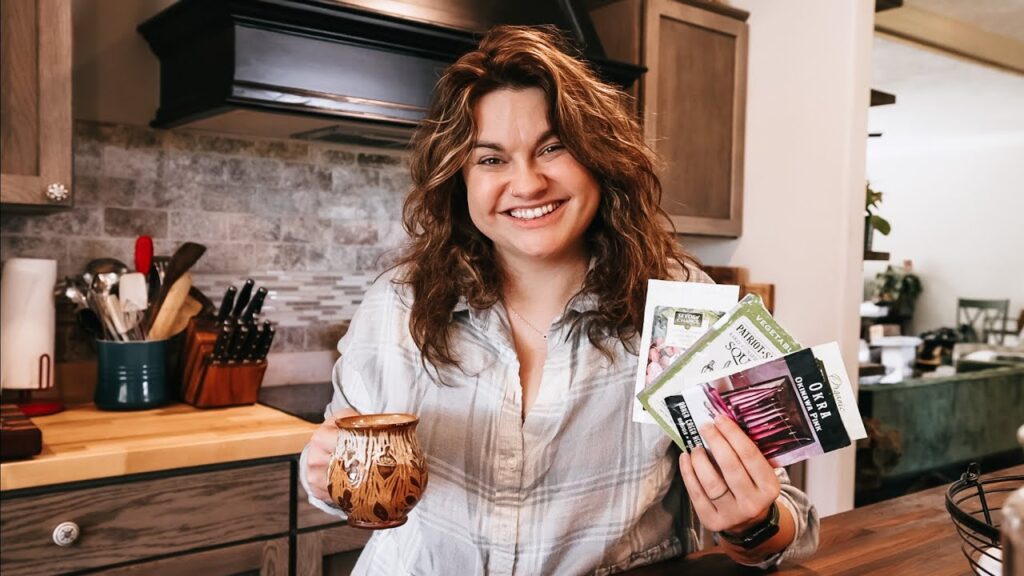
Get Out Your Calendar and Your Seeds
Once you know your first frost date and how many days your growing season is, it’s time to sit down with your calendar and seeds to make a plan. There are so many great places to buy heirloom seeds.
Look at your seed packets and see how long their growing season is. Some seeds will have a growing season of 45-60 days and some longer. Pro-Tip: Calendars are on sale now because it’s halfway through the year. Get a nice big one that you can write on and use it just for your fall garden planning.
Mark in your calendar when you should start each seed type. If you have any questions about when to plant, check out this handy chart with planting dates from the Farmers Almanac. Pro-Tip: Keep in mind that in the fall, the days are shorter than the summer days. This may extend the days needed to bring your garden harvest to maturity.
When making plans in your calendar, keep in mind these different types of freezes:
- Light Freeze – A light freeze is considered to be 29°F to 32°F. A light freeze will kill tender plants but not have much effect on other vegetation.
- Moderate Freeze – A moderate freeze is considered to be 25° F to 28°F. It will be widely destructive to most vegetation including fruit.
- Severe Freeze – A severe freeze is considered to be 24°F and colder. This will cause damage to almost all plants.
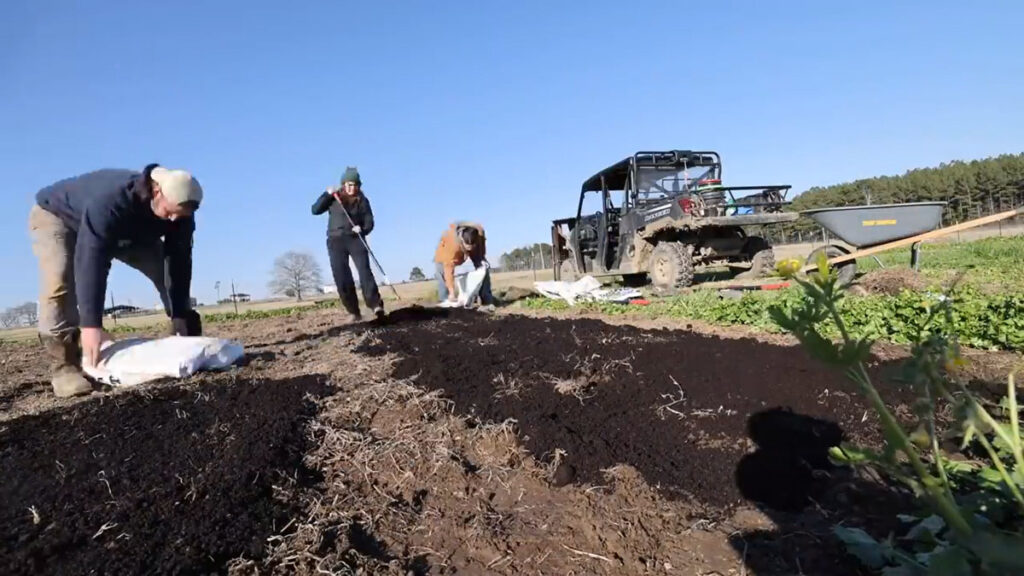
Map Out Your Vegetable Garden Space
When planning out your fall garden, you need to take a look at your garden space and see how you can make space for your fall crops. Some of your summer plants will be winding down and can be removed and replaced with fall plants.
Your soil will need fresh compost tilled several inches down before putting in your fall plants. Many stores are clearing out their compost and other soil amendments this time of year which is an added benefit to fall planting.
You can also learn how to make your own compost at home here.
Once your planting is done, it’s a good idea to add leaf or wood chip mulch around the base of your plants for added warmth.
Be freed from the idea that you must plant all like plants in one area. Mixing things up makes your garden more interesting, and it throws off the pests.
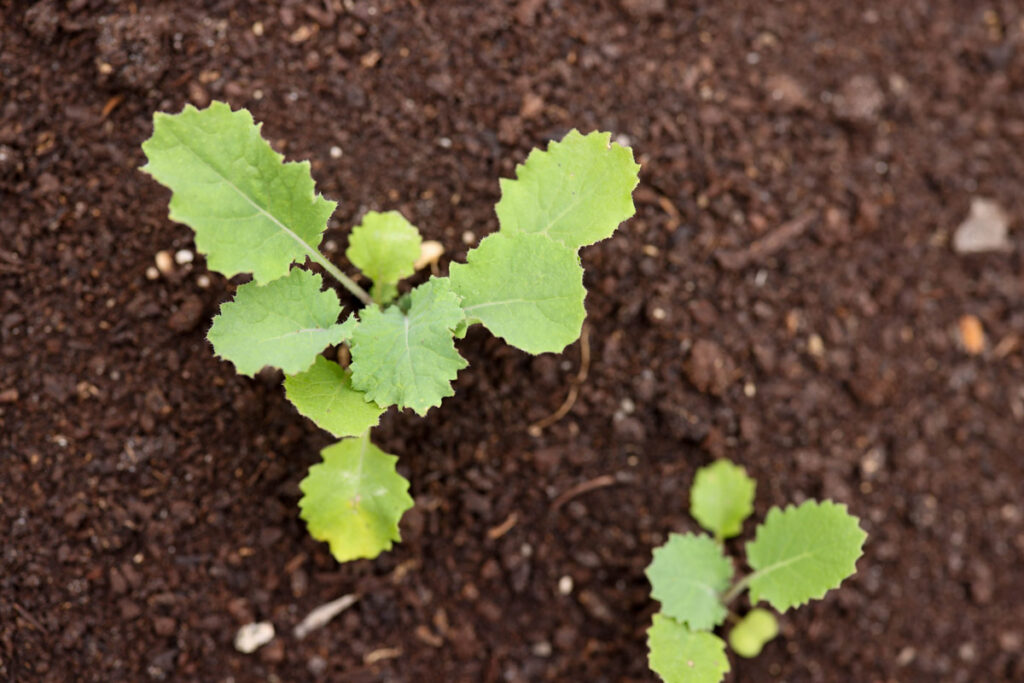
What Crops Should I Plant in July
Brassicas
This includes cabbage, cauliflower, kale, broccoli and Brussels sprouts. Start them indoors 12-14 weeks before your first frost.
These cool weather plants won’t germinate well in the summer heat, so starting them indoors in your nice cool house will give them a good start. Plant them outside six weeks before your first frost, and it’s best to plant them on an overcast day.
- Brussels Sprouts – Brussels sprouts love cool weather and are often started as a spring crop and grow through the summer. In warm climates, though, Brussels sprouts can be started in the fall and grown through the winter. Brussels perform best in fall temperatures between 45°F and 75°F. A freeze will enhance their flavor, making them perfect for roasting in the fall.
- Cabbages – Cabbages are frost-tolerant plants that reach their peak flavor after a light frost. Harvest your cabbage before a hard frost. You can store cabbage for a couple of months at temperatures between 32°F-40°F. They are perfect for putting up sauerkraut for the winter and wonderful in fall soups and stews.
- Cauliflower – Like the other brassica plants, cauliflower should be started indoors and can be moved outdoors when temperatures are consistently in the 70s and below. Cauliflowers have different maturity rates from 50 to 100 days, so read your seed packets. Besides the cauliflower you’re used to in the store, you can also grow orange and purple cauliflower. These more colorful varieties are often packed with more vitamins and nutrients.
- Broccoli – Broccoli seeds should also be started 10 to 12 weeks before the first frost. Transplanting to the garden should happen about six weeks before the first frost. Adding mulch around your broccoli plants will help to keep your plants cooler. Broccoli thrives in cooler temperatures when the weather is consistently around 70°F.
- Kale – Kale is high in vitamins, including Vitamins C and K, and it’s high in iron and antioxidants. If you don’t care for raw kale, try juicing it or adding it to soups and stews in the winter (you can read this post on an introduction to juicing here). Kale will be sweeter after the first frost. Kale takes approximately 90 days to maturity, so plant it in midsummer for fall harvesting.
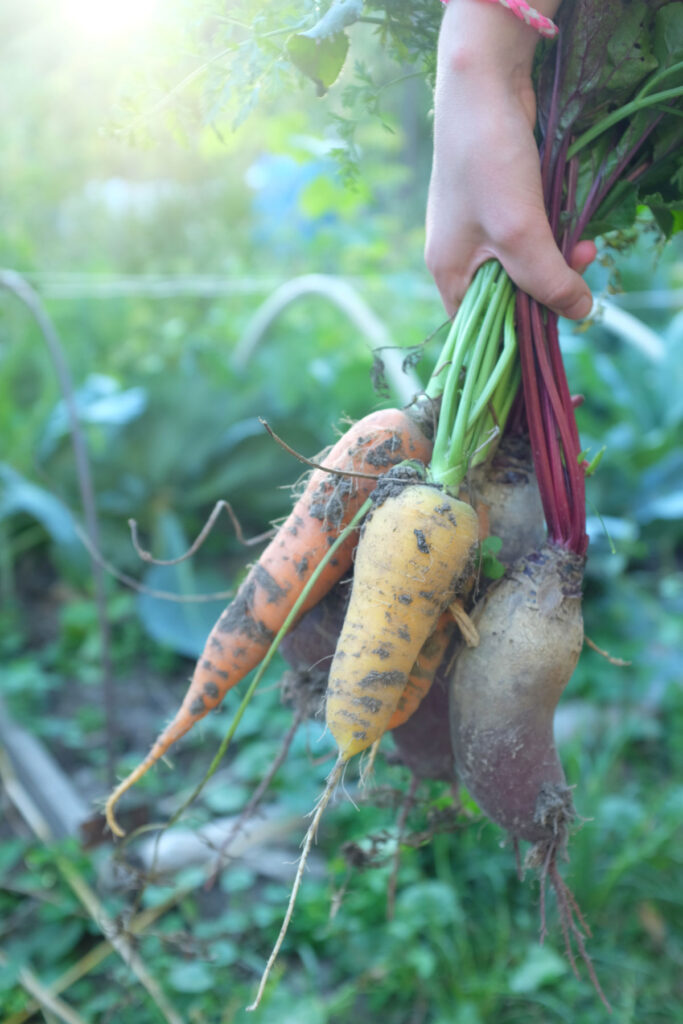
Root Vegetables
Rooted vegetables include radishes, beets, turnips, parsnips, rutabagas and carrots. They don’t do well in the heat because they bolt, but in the fall when it’s cooler, they thrive and take on a nicer flavor. You can succession sow many of your root vegetables like radishes.
- Beets – Beets are the perfect crop for a fall garden. They have a more vibrant color and a sweeter flavor when planted in the fall instead of spring. A freeze will improve their flavor. Beets can be direct sown 8 to 12 weeks before your first expected frost. Beets prefer the sun, but they can tolerate some shade. It’s important to mulch and water the soils around your beets as needed. The mulch will help keep the soil cooler, making for better-tasting beets.
- Radishes – Radishes are one of the fastest growing crops, so it’s easy to grow more than one planting in succession. Plant some radishes in mid-summer and their flavor will increase as the weather cools. Pro-Tip: If you don’t think you like radishes, try cutting them in quarters and tossing with olive oil and salt and pepper and roasting them.
- Turnips – Turnips are the ultimate cold weather crop. They are quick growers and should mature at about 60 days, so you can harvest in the spring and fall. Turnips love cool weather and grow best in temperatures of around 60°F. Direct sow in late summer to early fall, depending on your first frost date. Turnips are ready to eat when the bulbs start showing above the soil line. Grow them for their greens as well as their delicious bulbs. If you’ve never roasted turnips, you really must try it.
- Kohlrabi – Kohlrabi is also an excellent fall crop. It’s a fast grower, only taking six weeks to maturity. They are a close relative of the cabbage and are delicious, crisp and sweet. The bulbs and the leaves can be eaten raw or cooked and are delicious served with hummus or dip. Kohlrabi can be shredded, diced, and sliced. Kohlrabi is frost tolerant and gets sweeter after a frost or two. Direct sow kohlrabi six to eight weeks before your area’s first expected frost.
- Parsnips – Direct sow parsnips in the summer and plan on harvesting them after the frost. This improves the flavor immensely. Parsnips even keep well in your garden throughout the winter. Parsnips are not a well-known vegetable, but they are rich in Vitamin C and potassium, and they’re delicious when roasted.
- Rutabagas – Rutabagas are a cross between a turnip and a cabbage. They can be eaten raw, fried, mashed, boiled and roasted. Rutabagas take about 90 days to mature and taste sweeter after the first frost. If you haven’t tried rutabagas, try peeling them, boiling them and mashing them with sour cream and chives. The leaves can be used earlier and added to salads
- Carrots – For a fall harvest, plant carrots in the late summer when the hot summer weather is over. Carrots don’t germinate well in temperatures over 85°F. When planted in the fall, carrots have a much better flavor and their flavor improves after a light frost. Direct sow carrot seeds about 8-12 weeks before the first frost. Carrots can be kept in the ground in warmer climates through the winter.
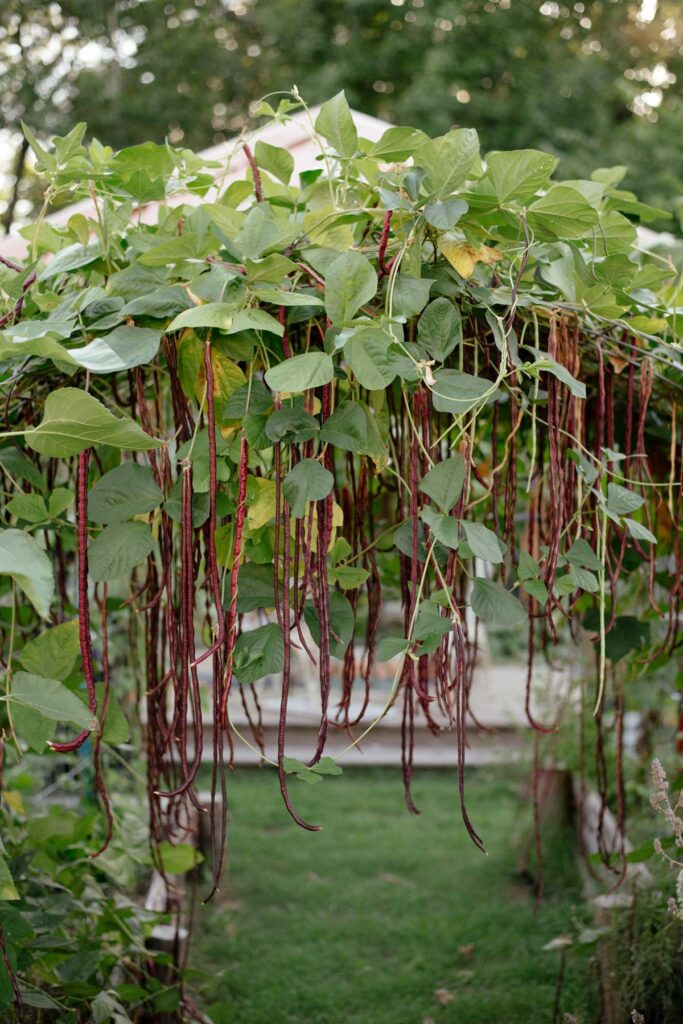
Second Wave of Short Season Summer Varieties
You still have time to raise a second wave of your summer varieties of vegetables, including beans, cucumbers, peas, zucchini squash, other summer squashes and tomatoes. All of these plants have a growing range of 60 days. They are all frost-tender plants, so the frost will kill them. Look at your calendar and ensure you have at least two full months before your first estimated frost date.
- Green Beans – All types of beans grow quickly and can produce a full harvest right up until the first frost. They are perfect for succession planting. You can start beans in the summer heat and sow them outdoors in your garden. Remember that your bush beans don't need any support, but pole beans will need a trellis.
- Cucumbers – Cucumbers can be planted in the late summer or early fall if the average temperatures stay above 65°F. They grow best in temperatures of 80°F-90°F. Growing pickling cucumbers in the fall is a great idea to push your pickle canning off until you have finished processing your summer harvest. Grab my favorite refrigerator pickle recipe here!
- Peas – Peas can be planted in the spring and again in the fall. They can handle a light frost. However, they will die with a heavy frost, so choose a variety for fall planting with a maturity date of around 60 days. Sow them directly into your garden about ten weeks before the first frost. If the summer days are still quite hot, keep them cool by mulching them and watering them well.
- Zucchini and Other Summer Squash – Summer squash can be planted in late July through August for a fall harvest. Summer squashes have a short growing season of 50-60 days, so they are the perfect fall crop. Their vibrant colors also make your garden beautiful. Pro-Tip: Despite what the name implies, winter squashes are not grown in the winter. They are not a fall crop at all. Winter squashes are frost tender. They are meant to be grown in the summer and used in the winter because they last a long time in cool storage.
- Tomatoes – If you’re in zones 8,9 and 10, there’s still plenty of time to get in a second round of tomatoes. Full-sized tomatoes will need 14 weeks to reach maturity, and cherry and dwarf tomatoes will need about 60 days. For a full tutorial on planting tomatoes, read how to plant tomatoes the best way here. Pro-Tip: You can start new tomatoes off your current plants any place where your plants have touched the ground and started roots. You can also prune suckers off your current plants and put them in a cup of soil and they will take root. (Watch this video where I harvest “tomato armpits” and re-root them.)
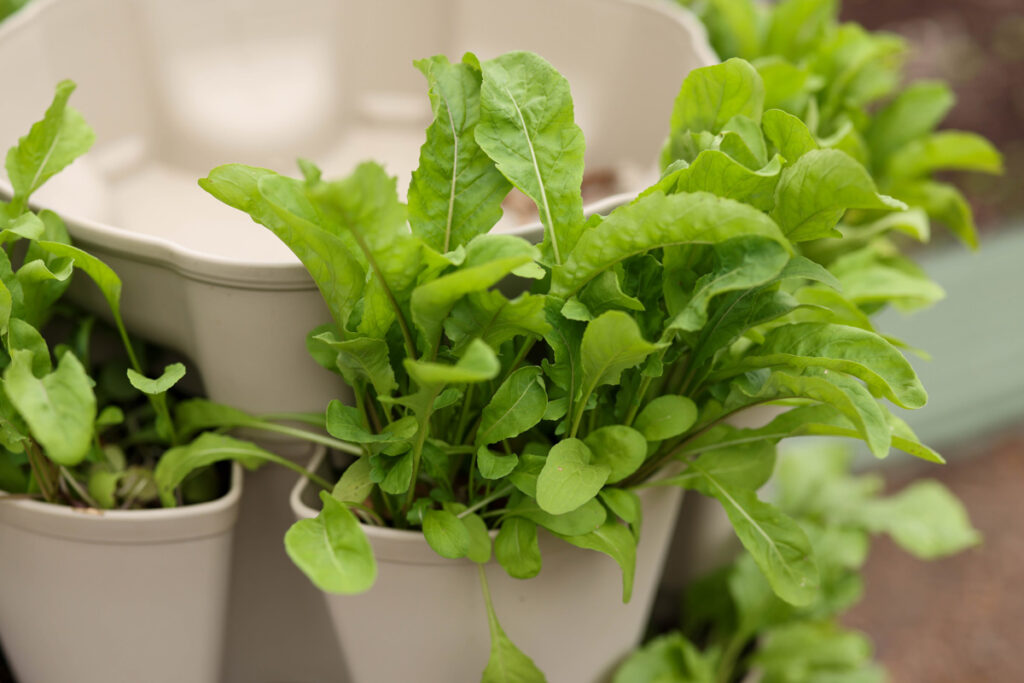
Greens
Some people think you can only enjoy fresh salad greens in the summer, but you can easily grow them in the fall. You may get a better crop of greens in the fall since the weather tends to be cooler and greens prefer cooler weather.
- Lettuce – Green leafy vegetables can handle a light frost. You can have fresh lettuce for your salads, lettuce wraps and hamburger toppings long into the fall. Homegrown lettuce tastes completely different from lettuce you get in the grocery store and growing it yourself will save you a fortune. Lettuce matures in 30-45 days based on the kind of lettuce, so it’s a good choice to use in succession sowing. You can even harvest baby greens in just a few weeks, weather depending. Pro-Tip: Did you know that you can grow salad greens all winter in a small winter greenhouse made from a clear plastic container?
- Collard Greens – Collard greens are extremely popular in southern gardens, but you can grow them anywhere. You can plant them in the spring or the fall. The frost will make them sweeter. Sow your collard greens 12 weeks before the estimated first frost date.
- Parsley – Parsley can survive in temperatures down to 10°F, making it one of the hardiest herbs. Plant your parsley at least ten weeks before you expect a frost. Parsley can be difficult to germinate, but it helps if you soak your seeds in water before planting them.
- Cilantro – Cilantro bolts easily in the summer heat, so it grows best in the cooler fall temperatures. Cilantro grows quickly, so plant it a month before the first frost.
- Swiss Chard – For a fall swiss chard harvest, plant chard seeds 40 days before the first frost date. Swiss chard tolerates frost and tastes better when it grows in colder temperatures.
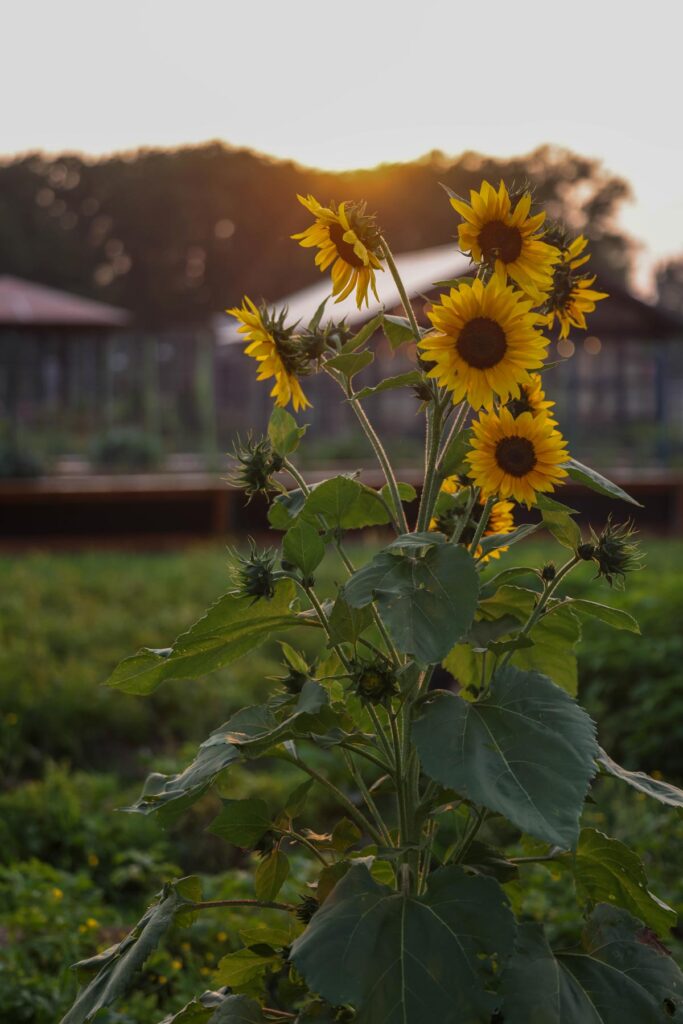
Flowers and Decorative Grasses
Since your garden is where you spend a lot of time, why not make it beautiful and functional?
- Sunflowers – Plant sunflowers at the end of summer to bring beauty into your garden all through the fall months. As well as being beautiful, sunflowers attract pollinators and birds to your garden, provide edible seeds throughout the winter months, detoxify heavy metals soil and look beautiful in cut flower arrangements.
- Blue Wheat – I plant blue wheat because it’s beautiful and looks amazing in cut flower arrangements, but also because it rectifies soil. Wheat improves soil by cycling nutrients and providing nitrogen into the ground.
- Trailing Nasturtiums – Nasturtiums will take off in the fall. They love the cooler weather. Nasturtiums are frost tender so enjoy them while you can. Add them to your trellises for some beauty, or treat your family to a flower on their dinner plate since nasturtiums are completely edible.
- Alyssum – Alyssum is not only beautiful but completely edible. It’s frost-hardy and has partitioning roots, which means it makes a great ground cover because it will grow around the roots of your other plants. Alyssum is also a great pollinator.
I hope you'll give fall gardening a try! It really does extend the season and allow for more time spent in my favorite place. If you're anything like me, you can't get enough time in the garden and the summer months come and go far too quickly.
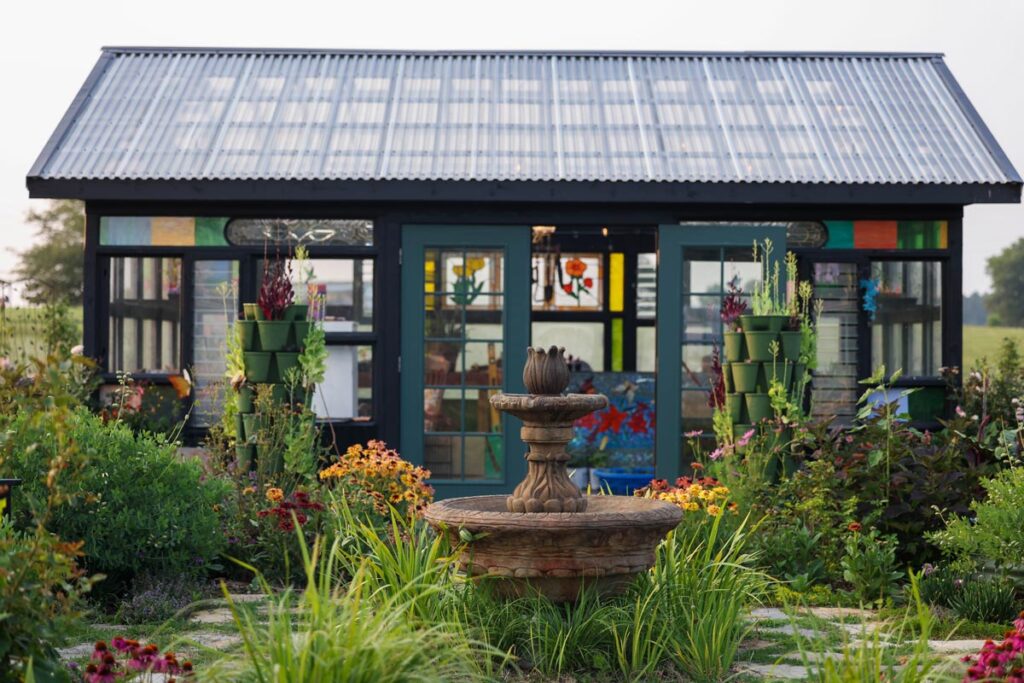
Other Gardening Articles You May Like
- My Must-Have Garden Tools
- Tomato Blight Treatment and Identification
- Container Gardening with a GreenStalk Planter
- Vegetable Garden Trellis: How to Plant & GROW
- How to Plant Sunflower Seeds
- Organic Garden Pest Control
- Tips for Growing Cut Flowers
- Growing in Soil Bags-Container Gardening Made Easy
- How to Start a Compost Pile

